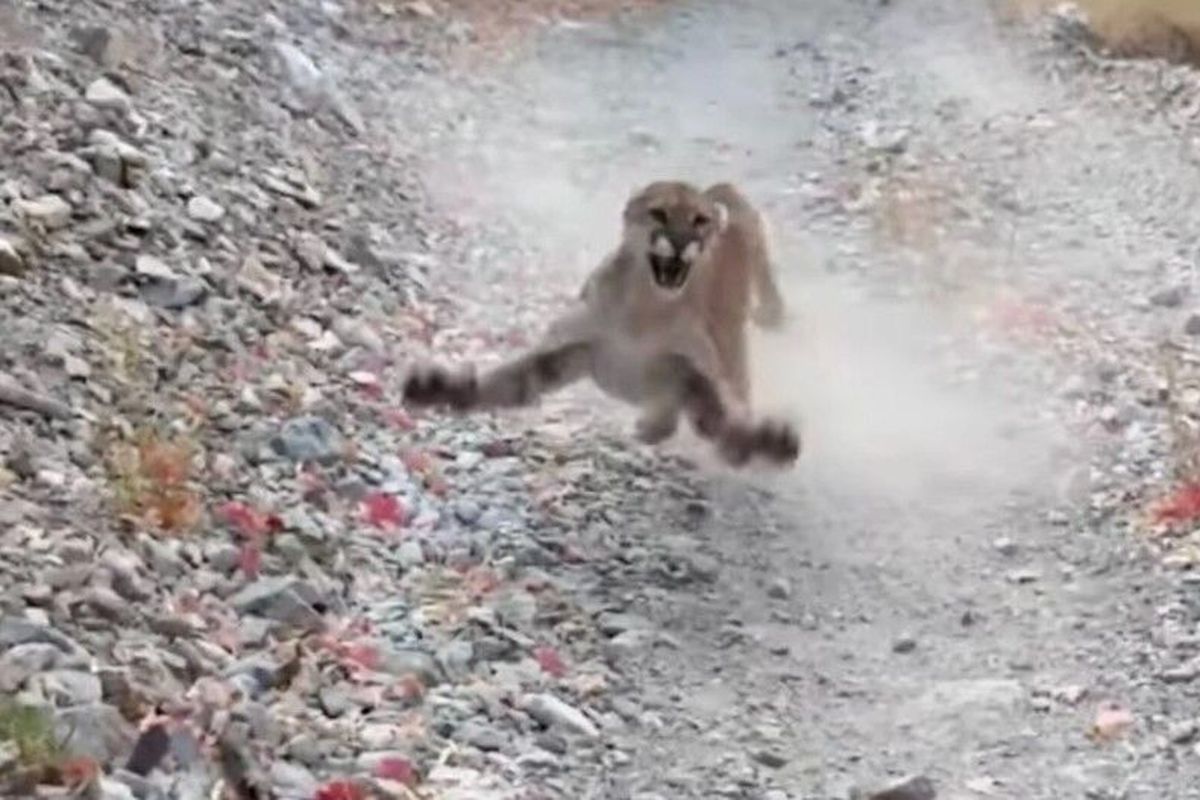‘Face the cat!’: UI cougar expert offers advice after viral video of mountain lion encounter

When one of the world’s leading mountain lion researchers viewed the now-famous video of a snarling cougar following a terrified hiker in Utah, the scene was eerily familiar.
“My first thought was, I’ve witnessed this before – twice, in fact – but instead of a hiker backing away from the cougar, it was me,” said Maurice Hornocker, who spent 28 years tracking mountain lions to learn about their behaviors, habits and habitats, and who founded the Hornocker Wildlife Institute at the University of Idaho in 1985, which later merged with the New York-based Wildlife Conservation Society.
“My next thought was that I wanted to tell the hiker, ‘Keep facing the cat. Face the cat!’ ” Hornocker said, making his first public assessment of the encounter during a recent telephone interview from his home near Boise.
Fortunately, Kyle Burgess of Utah kept facing the cat during the encounter along a wooded canyon trail near Provo on Oct. 10, using his phone to record what unfolded.
In the 6-minute video, the cougar is seen advancing toward Burgess as he slowly backs away on a dirt trail. “Go away!” Burgess shouts, along with curses and loud grunts.
Burgess posted the video to Instagram and it immediately went viral. Today, it has racked up 6.4 million views on YouTube and nearly 2 million views on Instagram.
Burgess later told reporters that he had spotted what looked like four fluffy kittens scampering just ahead of him on the trail. When he paused to shoot video, a mother mountain lion suddenly emerged. She started following him, growling with her ears pinned back and her tail swishing. Several times she is seen charging and lunging with her teeth bared. Each time, she stops a few feet before reaching him, her powerful legs kicking up dirt and gravel.
“She was in a threatening, but defensive stance to protect her babies. It was her way of saying ‘You back off!’ to the hiker,” said Hornocker, who experienced two similar encounters during his research while approaching radio-collared females with babies nearby. Reading the adult cats’ behavioral cues, he backed off, he explained.
“They were in full protection mode, the same as the female in that video,” said Hornocker, who in the 1960s began pioneering research on mountain lion population dynamics in central Idaho’s vast wilderness region. Today, he is recognized as the premier authority on the animal.
“Go away! I’m big and scary!” Burgess is heard yelling as he continues to back away.
But the cougar keeps following him.
Several experts interviewed in news stories have said they are puzzled that the mountain lion followed Burgess for six minutes. Solitary and secretive, cougars are rarely seen in the wild and chance encounters with humans are typically brief. At the end of the video, she finally turns and runs after he picks up a rock and tosses it at her.
“I think she was putting more and more distance between him and her youngsters,” Hornocker said. “If she had planned to attack him, she would have been secretive. She would have lowered herself close to the ground and come at him like a rocket. Instead she kept following him and making herself loud and visible.”
Had Burgess not backed away slowly and made loud noises, the scenario could have gone in a tragic direction. Running away would have made him look like prey, Hornocker said, as would stopping and bending over to pick up an object to throw. Fortunately, Burgess was able to grab a rock when the mother cat took her glaring eyes off him to glance back at her cubs.
Not only will running trigger a cougar’s instinct to chase prey, but it’s impossible to outrun one. These large cats can leap 30 feet from a standstill and reach speeds of 50 mph in a sprint, according to the Washington Department of Fish and Wildlife. By contrast, the world’s fastest runner is Usain Bolt of Jamaica, who clocked 28 mph in the 100-meter dash.
An estimated 2,100 mountain lions live in Washington, and human conflicts with them remain rare. In the past 100 years, two people have been killed in cougar attacks and 18 injured, according to state wildlife authorities.
“Dogs and large livestock kill far more people than mountain lions do,” said Hornocker, who trekked more than 5,000 miles in pursuit of the elusive cats early in his career. Due to Hornocker’s scientific research, cougars were reclassified from predators to big game species in most Western states, including Washington.
Cougars stick to the shadows, and seeing one in the wild is extremely rare, he said. Should you spot one, here’s what he recommends:
- Never turn around and run or try to ride away on a bicycle. Instead, “face the cat.”
- Back away, shout and appear large, just as Burgess did as he backtracked from the mother cat.
- Avoid bending down or crouching, as you will appear smaller and less threatening and possibly trigger an instinctual prey response.
- Carry something that can be tossed in the cougar’s direction – a walking stick, trekking poles, a backpack, water bottle. If necessary, snap a branch from a tree.
- You can also take preventive measures, such as not hiking alone on backwoods trails and not wearing headphones.
- Keep in mind that cougar cubs can resemble young domestic cats. Don’t approach them in the wild. As the video clip demonstrated, just because the mother isn’t visible doesn’t mean she’s not nearby.
One final note: Contrary to what many headlines blared, the mountain lion did not “stalk” Burgess, Hornocker said. “When cougars stalk, they’re quiet and stay out of sight – it’s one of the secrets of their success.
“In this case, she was keeping a perceived threat away from her cubs. She was chasing him away.”